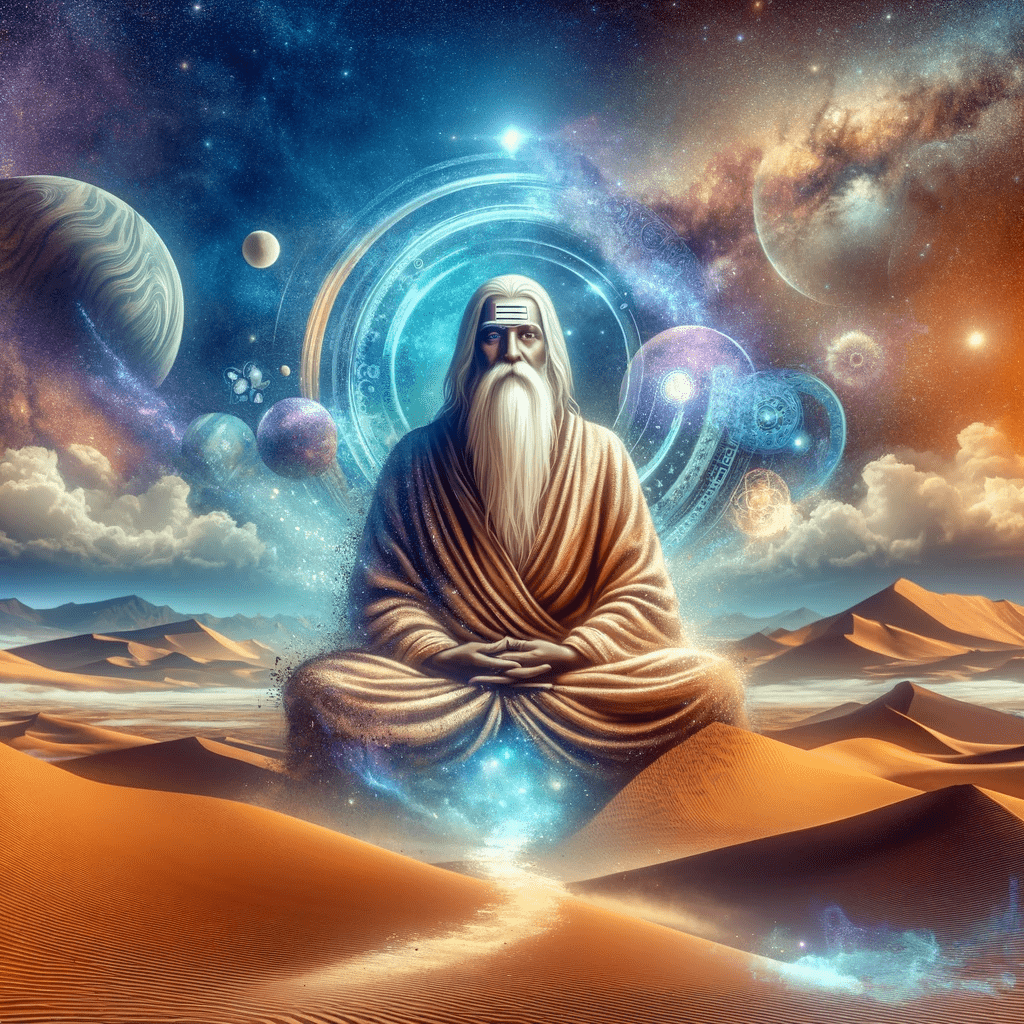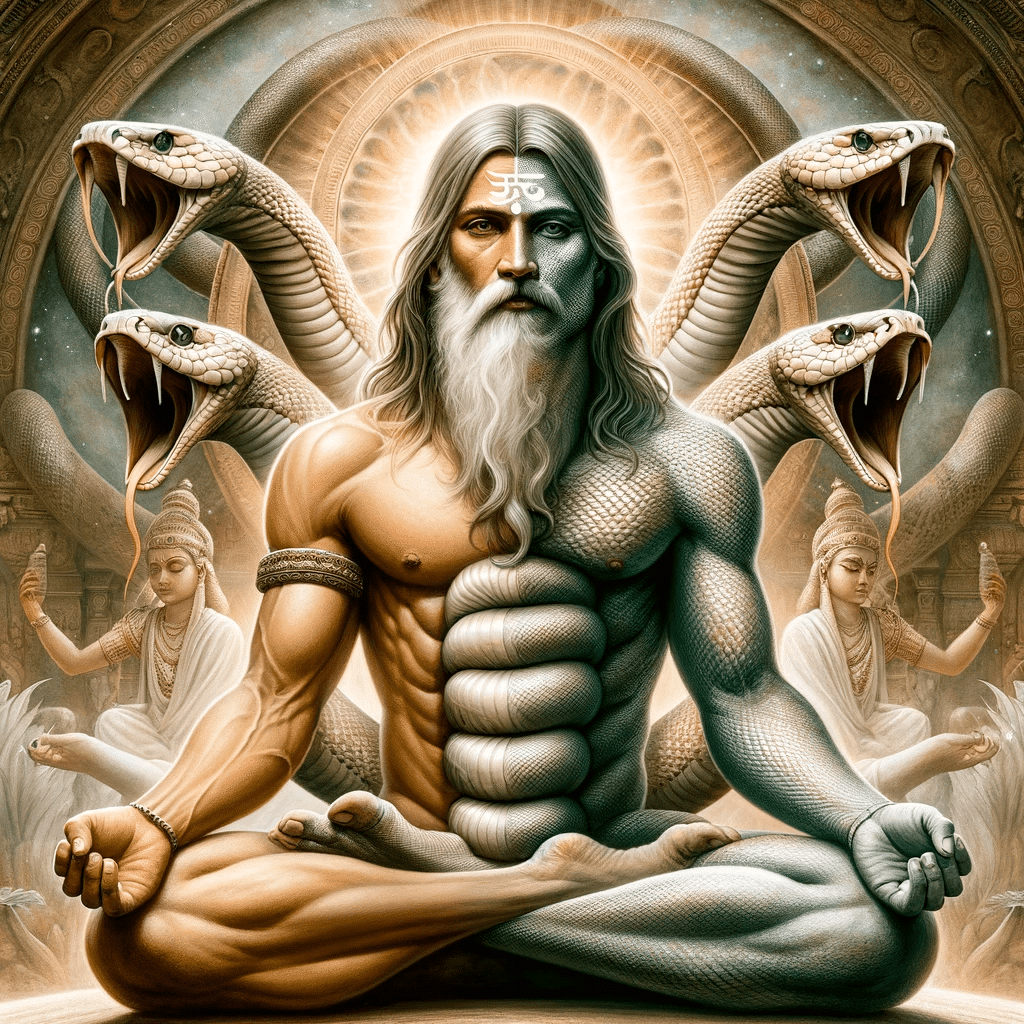
Patanjali was the author of the Yoga Sutras, one of the most influential yoga texts in the modern world. He is also believed to have a snake-human form during his teaching. He with his human form used to perform daily routines and then transformed to half human – half snake shape covered by a curtain so that the students weren’t able to see him while he would explore the mystical techniques of ancient wisdom.
Probably a group of people…
Despite what modernized and idealistic yoga blogs and sites will tell you, it was most likely a group of people who lived about 1600 years ago, but could be as old as 2500 years. I say that it was likely a group of people because of the amount of knowledge contained in the sutras and the way that people functioned in groups thousands of years ago. We like to attribute knowledge to one author, rather than recognizing the multitudes of authors, time periods, and influences that a piece of work contains. This is particularly true of the Christian bible.
Panini was likely involved in this group of people; he is considered a father of modern language and contributed significantly to Sanskrit and compound noun theory, as well as syntax and phonology.
Patanjali is the not father of modern yoga. That title can be given to Krishnamacharya. Patanjali was more of a founder; the group of people took works from their respective time period and before, then compiled them into digestible teachings that students and teachers could reference on their yoga journeys. He created a framework that Krishnamacharya would later use to create the modern poses, sequences, and specific techniques. Where Patanjali’s yoga begins is in the traditions that Krishnamacharya learned from his father and his father before him. Until yoga became modernized and everyone could start a daily practice of yoga.
As humans we love to idealize about the past and one figure completing this vast amount of infrastructural work for practitioners of yoga, but Patanjali is not a figure that we need to deify or put on a pedestal. There were likely multiple people with the name and likely multiple people who authored the yoga sutras. However, Patanjali’s work on the sutras is enough to keep us busy thinking about our own humanity instead of focusing on the origins of the text, because Patanjali did not seem to claim any credit for the contemporary authors of the yoga sutras.
The 196 sutras, or short teachings from the yoga sutras are fantastic in their comprehensive philosophical scope. They are also written in Sanskrit, which is a great administrative language and is very specifically used in philosophy. They were, however, lost to time in the 12th century until the 19th century when they were revived by modern Indian scholars. During the 19th and 20th century the texts rose in popularity and prominence over the Bhagavad Gita, Yoga Vasistha, and other literature on Hatha yoga.
There are four parts to the yoga sutras:
- Samadhi Pada – describes oneness with the divine and Samadhi
- Sadhana Pada – describes practices and Ashtanga
- Vibhuti Pada – describes “supernatural” effects of yoga
- Kaivayla Pada – describes moksha, liberation, or enlightenment
Each of the four chapters is an invigorating review of conscious experience and systematic functionality of the human mind. The second chapter is probably the most concrete in terms of advice for actually practicing yoga, rather than philosophy and it is where the eight limbs of yoga or Ashtanga is explained.
Ashtanga is not only a system of acrobatic yoga propagated by Pattabhi Jois, but a philosophical system for achieving Samadhi and Moksha, also known as enlightenment. The eight limbs of yoga are described as scaffolding, or a framework for ascending into the heights of the yoga of knowledge, or Raja yoga, which BKS Iyengar described to be infinite. The eight limbs are as follows

- Yamas – ethics and restraints
- Niyamas – virtues
- Asanas – physical postures
- Pranayamas – breathing exercises
- Pratyahara – sense withdrawal
- Dharana – single pointed meditative focus
- Dhyana – meditative awareness of oneness
- Samadhi – unison and oneness with the divine in bliss
These are the scaffolding that Patanjali assembled to assist individuals in realizing their self. Many of these concepts cross-over into Buddhist ideals of meditation, as you may have already noticed. Once the self is realized, liberation and freedom from the cycles of death and rebirth is afforded to the practitioner.This modernization of Hinduism was very well received in the western world.
In reviewing the history of something as old and popular as yoga it is important to understand that we have only theories and hypotheses about what was happening 1500-2500 years ago. No one really knows the group who made up the author named Patanjali, how old they are, how they compiled their information, or what exact sources they used. Instead we can guess, which is more fun anyways.
References:


2 thoughts on “Patanjali”